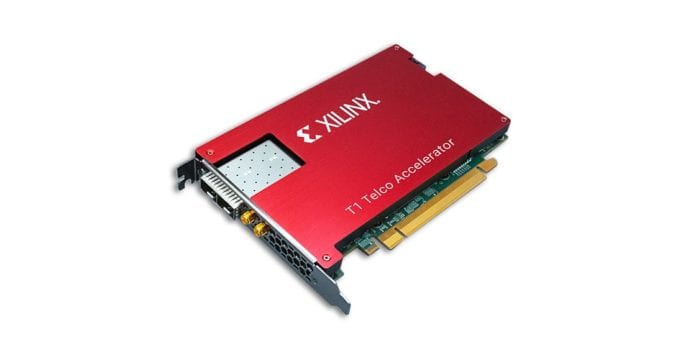Xilinx previously tapped by Telefónica in its push for massive Open RAN deployments
This week San Jose-based Xilinx announced it’s shipping a T1 Telco Accelerator Card designed for 5G Open RAN networks with a specific focus on simplifying Open RAN fronthaul termination at an open distributed unit (O-DU) and Layer 1 offload.
In an interview with RCR Wireless News, Xilinx’s Mike Wissolik, director of product marketing for the Wired and Wireless Group, said the new card was developed in response to operator demand–a recurring theme in the Open RAN space, which is marked by operators taking a lead role in driving vendors to develop modular, interoperable network infrastructure.
Wissolik said vendor lock-in is a problem for major telcos because it reduces the flexibility necessary to deliver differentiated software-based services. Open RAN “allows a lot more vendors to play…New players equals new innovation. At the end of the day, it’s all about commercializing software services at the edge.”
The T1 card cuts down the number of CPU cores needed to operate an O-DU and, based on the offload of channel coding from CPUs to the T1 card, delivers a 45-x encoding throughput improvement compared to a server running the same functions without the acceleration capabilities. The card also reduces capex and power consumption, according to Xilinx.
Wissolik said that at the end of 2019 and into 2020, “Everyone came to us asking what’re you doing in O-RAN. As we were developing this in the early stages, it really hammered home for us that there’s really demand behind this.”
This tracks with an Open RAN forecast recently published by Dell’Oro Group which projects Open RAN investments will double this year to more than $5 billion. Dell’Oro’s Stefan Pongratz called out a number of trends creating this growth, including use of Open RAN in live networks, buy-in from incumbent infrastructure vendors and further development of virtualized RAN solutions, among other drivers.
In its announcement of the T1 Telco Accelerator Card, Xilinx touted support from Mavenir and Nokia, companies both working to push Open RAN albeit from different angles given their comparative size and market penetration.
Mavenir’s SVP and GM of the Radio Access Business Unit Mikael Rylander said the card “represents a powerful addition to 5G Open RAN which provides the hardware adaptability to interoperate with a wide variety of O-RAN equipment.” Nokia’s Pasi Toivanen, head of Edge Cloud Platforms, said the “design team at Nokia looks forward to continuing to work with Xilinx to see these exciting new options and capabilities to the growing 5G market.”
In March this year, multi-national operator Telefónica pulled together a group of specialists ahead of planned Open RAN trials in Brazil, Germany, Spain and the U.K. Xilinx provided its Zynq UltraScale+ RF SoC for 4G and 5G radios; other infrastructure vendors included were Altiostar, Intel and Supermicro.
Earlier this week, Telefónica’s Global CTIO Enrique Blanco said Open RAN is a “necessity. The traditional radio vendor, it is not enough. We are trying to build a common approach in the architecture.” Blanco made this comment during a webinar with Rakuten Mobile CTO and CAO Tareq Amin who led the deployment of the first fully-virtualized, open network in Japan.
Blanco laid out a three-phase timeline for driving Open RAN tech into 50% Telefónica’s network in the 2022-2025 timeframe. Phase 0 is underway and includes pilot projects; Phase 1 is marked by initial deployments between 2021 and 2022; Phase 2 is massive deployment beginning in 2022.

